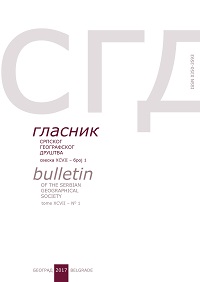Multi–Hazard Assessment Using GIS in the Urban Areas: Case Study - Banja Luka Municipality, B&H
Multi–Hazard Assessment Using GIS in the Urban Areas: Case Study - Banja Luka Municipality, B&H
Author(s): Ivica Milevski, Novica Lovrić, Slavoljub Dragićević, Radislav TošićSubject(s): Physical Geopgraphy, Maps / Cartography, Rural and urban sociology
Published by: Српско географско друштво
Keywords: Natural hazard; Vulnerable areas; Multi-hazard assessment; Banja Luka Municipality;
Summary/Abstract: The research presents a techniques for natural hazard assessment using GIS and cartographic approaches with multi-hazard mapping in urban communities, because natural hazards are a multi-dimensional phenomena which have a spatial component. Therefore the use of Remote Sensing and GIS has an important function and become essential in urban multi-hazard assessment. The first aim of this research was to determine the geographical distributions of the major types of natural hazards in the study area. Seismic hazards, landslides, rock falls, floods, torrential floods, and excessive erosion are the most significant natural hazards within the territory of Banja Luka Municipality. Areas vulnerable to some of these natural hazards were singled out using analytical maps. Based on these analyses, an integral map of the natural hazards of the study area was created using multi-hazard assessment and the total vulnerability was determined by overlapping the results. The detailed analysis, through the focused research within the most vulnerable areas in the study area will highlight the administrative units (urban centres and communes) that are vulnerable to various types of natural hazard. The results presented in this article are the first multi-hazard assessment and the first version of the integral map of natural hazards in the Republic of Srpska.
Journal: Гласник Српског географског друштва
- Issue Year: 93/2013
- Issue No: 4
- Page Range: 41-50
- Page Count: 10
- Language: English

